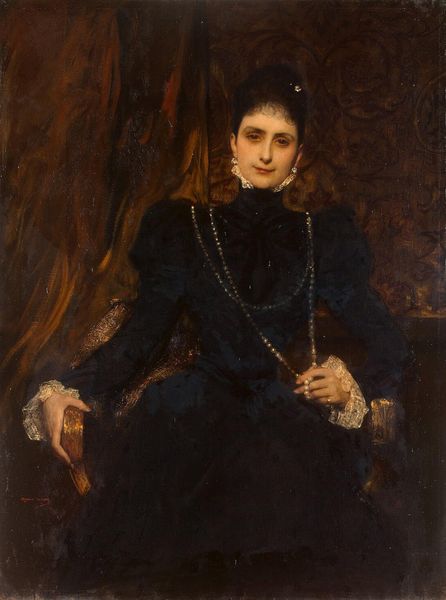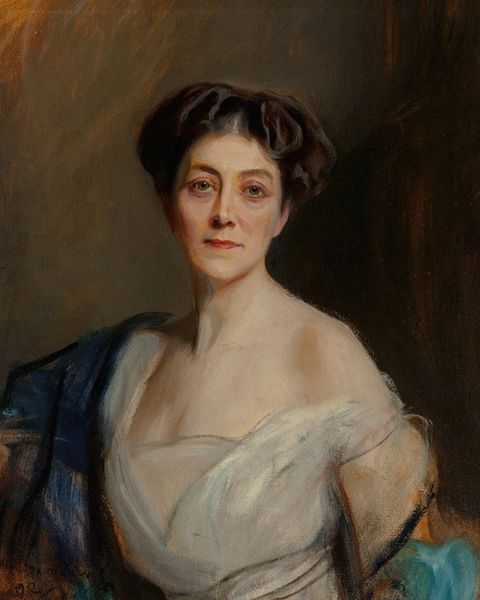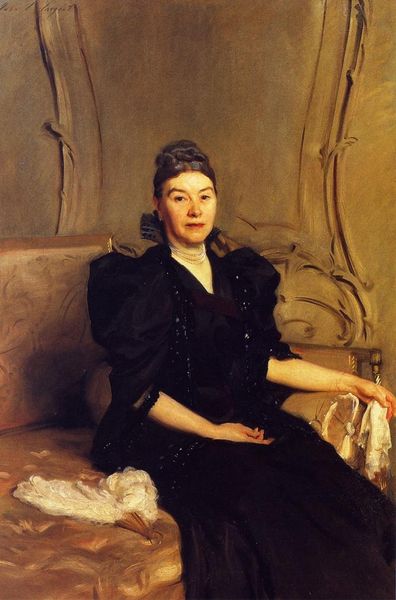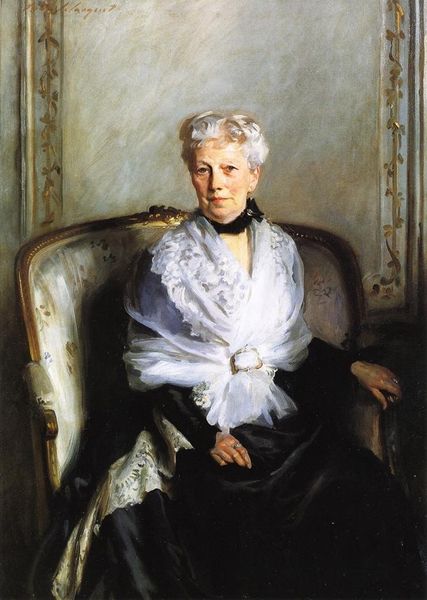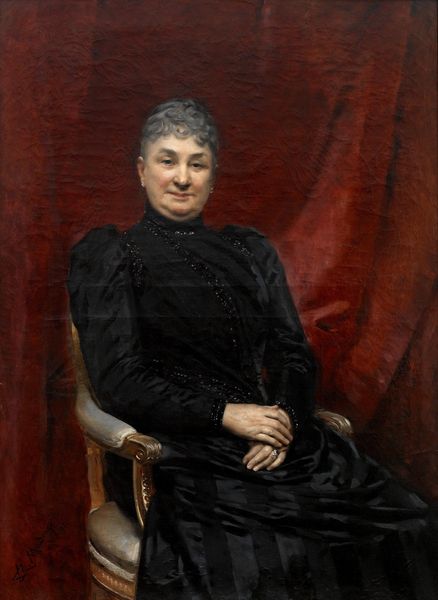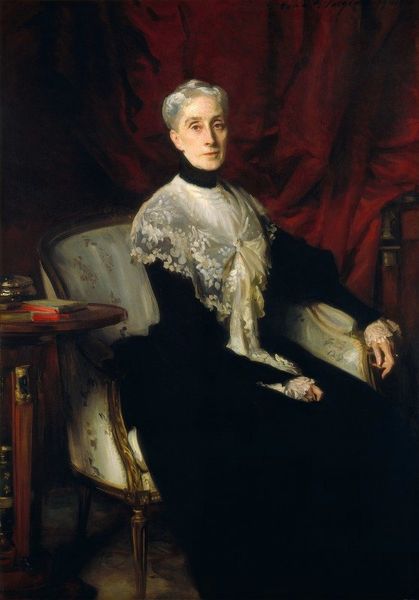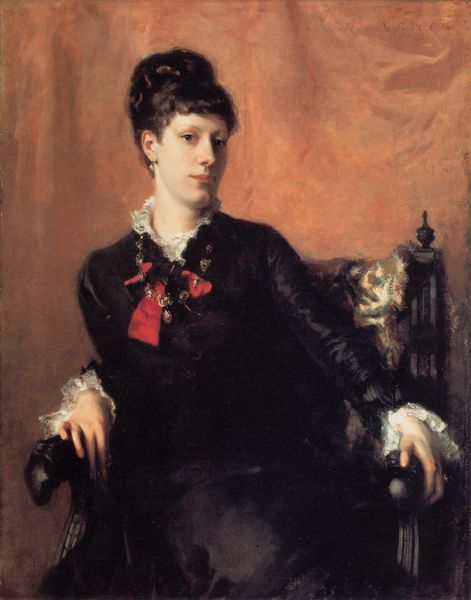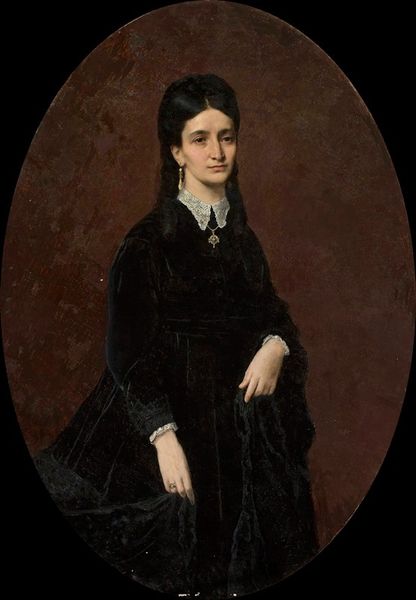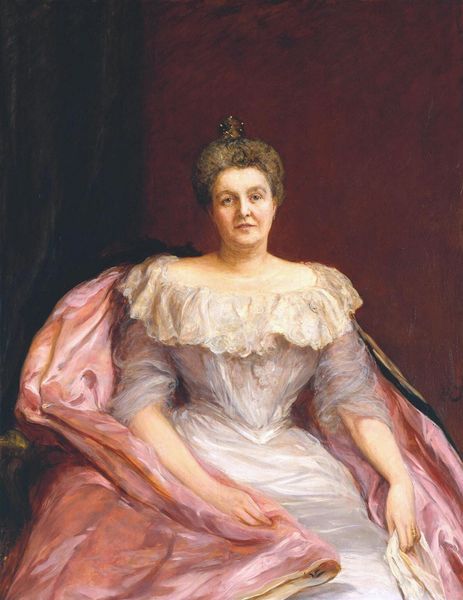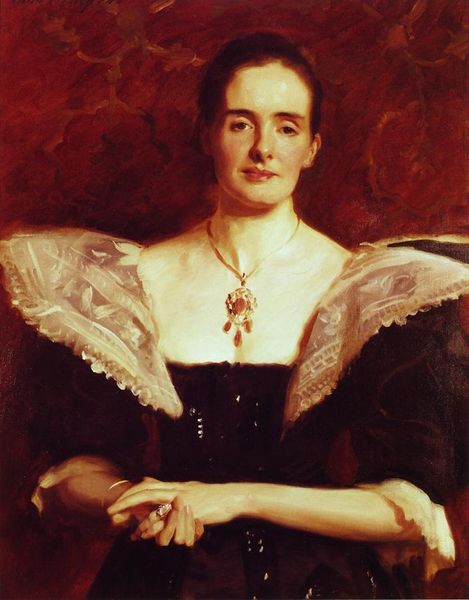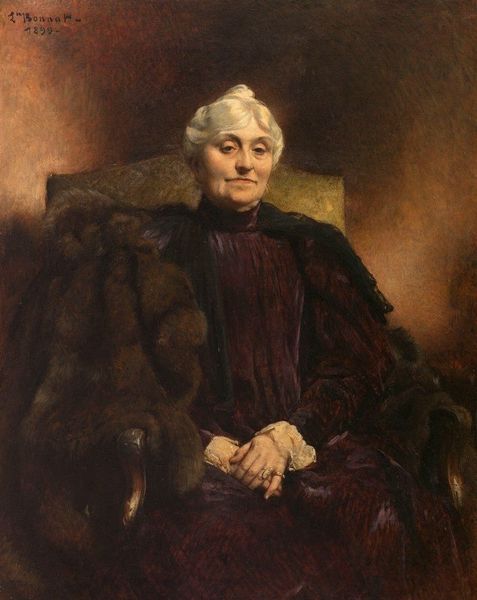
Dimensions: 152.5 x 96.5 cm
Copyright: Public domain
Editor: This is John Singer Sargent’s "Portrait of Mrs. Harold Wilson," painted in 1897. The artist captured Mrs. Wilson in oil paint, posed formally. I'm struck by how the dark dress contrasts with the light background, almost obscuring her figure despite the conventional style. How do you interpret this work, particularly considering its time period? Curator: It’s tempting to see this as a simple portrait of societal status, but let's dig a little deeper. Considering Sargent’s portraiture during the late 19th century, can you identify the conventions it seems to embrace or resist? Editor: I suppose the way Mrs. Wilson is positioned feels traditional. Her attire signals wealth, but something in her reserved gaze disrupts a purely celebratory representation. Curator: Exactly! Sargent subtly challenges the typical Gilded Age portrayal. This portrait could be viewed as a statement on the restrictive roles women occupied. While affluent, Mrs. Wilson's individuality peeks through. Consider the historical debates on female visibility and agency in that era—does the subdued palette, almost swallowing her form, speak to that silencing? Editor: It makes me wonder about her personal story. Is it a commentary on the suppression of women's voices and individuality in that era? Curator: Precisely. The soft brushstrokes, characteristic of impressionism, might symbolize the blurring of individuality within societal expectations. Her gaze, though direct, lacks overt expression—a subtle resistance, perhaps? Editor: So, beyond a simple portrait, this work embodies the complexities of womanhood and social identity at the time? Curator: Indeed. By understanding the artistic language and engaging with the social theories, we can see how Sargent used the portrait to spark quiet yet profound dialogue. Editor: That's an insightful perspective! It’s more than just a portrait. It mirrors the period’s conversations about gender and personhood. I’ll never look at a portrait the same way again.
Comments
No comments
Be the first to comment and join the conversation on the ultimate creative platform.

